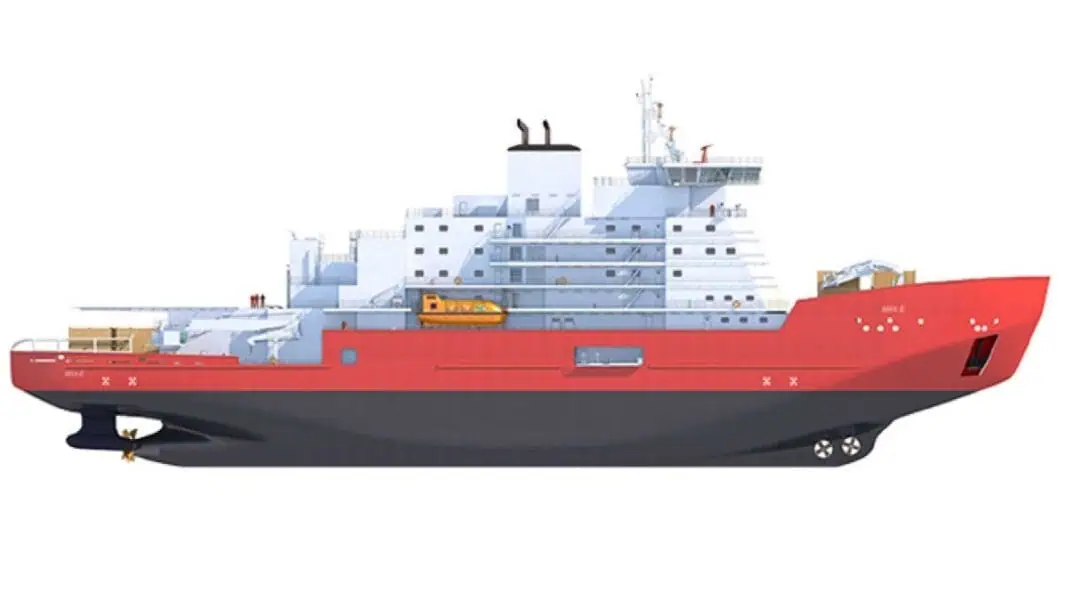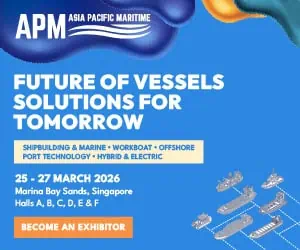In a landmark moment for Canadian sovereignty and shipbuilding, Davie today officially commenced construction of the Polar Max icebreaker, a vessel set to redefine Canada’s presence and capabilities in the Arctic upon its delivery in 2030. This project marks the most significant investment in a Canadian polar icebreaker in over half a century.
Uniquely, the Polar Max will be constructed through an innovative international industrial partnership. The hull will be built at Davie’s Helsinki Shipyard in Finland, a facility responsible for 100% of the complex medium to heavy icebreakers delivered from the world-leading Finnish maritime cluster over the past 25 years. The hull will then be transported to Davie’s Lévis, Quebec facility for final outfitting, commissioning and delivery.
The largest proportion of the work on the Polar Max, and delivery of the ship to the Canadian Coast Guard, will be from Davie’s home facility in Lévis, which is simultaneously undergoing an $840 million upgrade. This will secure Canada’s long-term ability to design and build complex ships for current and future Arctic programs. The hybrid build strategy will accelerate the delivery of the ship by several years ahead of the original schedule. It will also bring forward job creation and the transfer of shipbuilding know-how to Canada, while stimulating Canada’s maritime supply chain.
The Polar Max sets a new standard for Canadian shipbuilding procurement – a smart approach that will deliver major economic and strategic benefits to Québec and Canada. Notable features:
- Rapid: Construction will begin just five months after contract signature.
- Disciplined: Fixed-price contract supports on-time delivery and cost benefits.
- Business boost: $200 million will be invested in small and medium-sized Canadian businesses throughout the Polar Max supply chain.
- Québec jobs: The creation of thousands of high-value jobs in Lévis, across the province and throughout Canada’s marine industry will be accelerated.
- New partners: Le Groupe ALMACO, a proudly Canadian subsidiary of ALMACO Group, will deliver a major outfitting contract for Polar Max. This collaboration will create jobs, industrial capability, and a first-in-Canada modular cabin factory in Québec.
- Knowledge transfer: Workforce and expertise exchange with Helsinki Shipyard will directly strengthen future National Shipbuilding Strategy projects.
“Today’s steel cutting ceremony is more than the start of construction of one very special ship. It’s the start of a new chapter in Canadian Arctic leadership,” said James Davies, CEO of Davie. “The Polar Max represents how trusted allies can collaborate to deliver strategically vital projects when they are needed most. We want to thank the governments of Canada and Québec for their vision, and we are determined to deliver this ship on time and on budget.”
“Davie is uniquely positioned to deliver a ship as advanced and strategically important as the Polar Max,” said Alex Vicefield, Chairman and CEO of Inocea, Davie’s parent group. “With a global footprint, including our soon-to-be upgraded Lévis facility and the renowned Helsinki Shipyard, we combine the world’s best polar shipbuilding expertise with the strength, skill and unique Davie spirit of our Canadian workforce.”
A Canadian shipbuilding solution with global impact The Polar Max icebreaker is a great example of what can be achieved as part of the Icebreaker Collaboration Effort (ICE Pact) — a trilateral initiative between Canada, Finland, and the United States to design and build Arctic and polar icebreakers— and will be the first polar icebreaker to be built collaboratively between Europe and North America.
The Polar Max is a production-ready heavy icebreaker designed to operate in some of the world’s harshest conditions. The vessel will support Canada’s Arctic sovereignty, critical scientific missions, environmental protection efforts, and maritime security.












